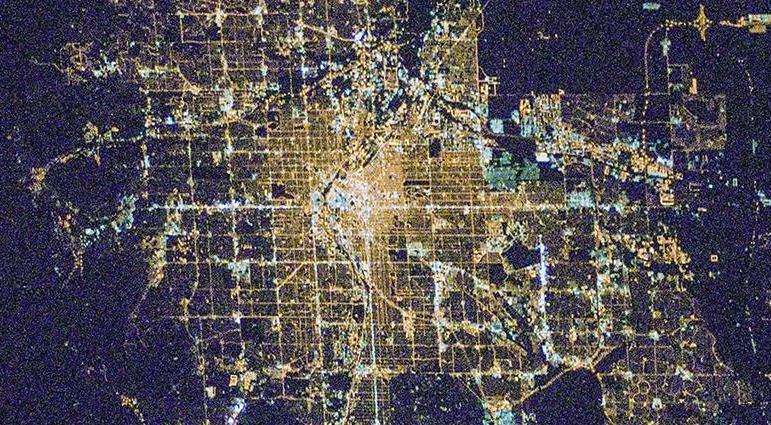When it comes to technology and the environment, it often seems like it's "one step forward, two steps back." Basically, sometimes the new and innovative technologies that are intended correct for one set of problems inevitably lead to new ones. This appears to be the case with the transition to solid-state lighting technology, aka. the "lighting revolution".
Basically, as nations transition from traditional lights to the energy-saving Light-Emitting Diodes (LEDs), there is the potential for a rebound effect. According to an
international study
led by Christopher Kyba from the
GFZ German Research Center for Geoscience
, the widespread use of LED lights could mean more usage and more light pollution, thus counter-acting their economic and environmental benefits.
The study, titled "
Artificially Lit Surface of Earth at Night Increasing in Radiance and Extent
", recently appeared in the journal
Science Advances
. Led by
Christopher C. M. Kyba
, the team also included members from the
Leibniz Institute of Freshwater Ecology and Inland Fisheries
, the
Instituto de Astrofísica de Andalucía
(CSIS), the Complutense University of Madrid, the University of Colorado, the University of Exeter, and the
National Oceanic and Atmospheric Administration
(NOAA).
[caption id="attachment_137993" align="aligncenter" width="408"]
Photograph of Calgary, Alberta, Canada, taken from the International Space Station on Nov. 27th, 2015. Credit: NASA's Earth Observatory/Kyba, GFZ
[/caption]
To put it simply, the cost-saving effects of LED lights make them attractive from a consumer standpoint. From an environmental standpoint, they are also attractive because they reduce our carbon footprint. Unfortunately, as more people are using them for residential, commercial and industrial purposes, overall energy consumption appears to be going up instead of down, leading to an increased environmental impact.
For the sake of their study, the team relied on satellite radiometer data calibrated for nightlights collected by the
Visible/Infrared Imager Radiometer Suite
(VIIRS), an instrument on the NOAA's
Suomi-NPP satellite
that has been monitoring Earth since October of 2011. After examining data obtained between 2012 and 2016, the team noted a discernible increase in power consumption associated with LED use. As they explain in their study:
This data is not consistent with energy reductions on a global scale, but rather an increase in light pollution. The increase corresponded to increases in the Gross Domestic Product (GDP) of the fastest-growing developing nations. Moreover, it was also found to be happening in developed nations. In all cases, increased power consumption and light pollution has natural consequences for plants, animals, and human well-being.
As Kevin Gaston - a professor from the
Environment and Sustainability Institute
at the University of Exeter and a co-author on the study - explained in a University of Exeter
press release
:
The team also compared the VIIRS data to photographs taken from the
International Space Station
(ISS) which showed that the Suomi-NPP satellite sometimes record a dimming of some cities. This is due to the fact that the sensor can't pick up light at wavelengths below 500 nanometers (nm) - i.e. blue light. When cities replace orange lamps with white LEDs, they emit more radiation below 500 nm.
The effect of this is that cities that are at the same brightness or have experienced an increase in brightness may actually appear dimmer. In other words, even in cases where satellites are detecting less radiation coming from the surface, Earth's night-time brightness is actually increasing. But before anyone gets to thinking that it's all bad news, there is a ray of light (no pun!) to be found in this research.
In previous studies, Kyba has shown that light emissions per capita in the US are 3 to 5 times higher than that in Germany. As he
indicated
, this could be seen as a sign that prosperity and conservative light use can coexist:
Reducing humanity's impact on Earth's natural environment is challenging work; and in the end, many of the technologies we depend upon to reduce our footprint can have the opposite effect. However, if there's one thing that can prevent this from continually happening, it's research that helps us to identifies our bad habits (and fix them!)
Further Reading: Eureka Alert!, University of Exeter, Science Advances
 Universe Today
Universe Today
